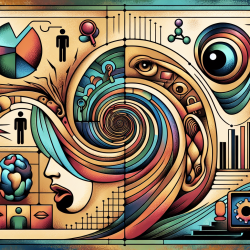The SCERTS model, which stands for Social Communication, Emotional Regulation, and Transactional Support, is a multidisciplinary educational approach. This model emphasizes enhancing social communication and emotional regulation through collaborative efforts among educators, therapists, and families.
Key Findings from the Study
The pilot study involved 122 children with ASD in Hong Kong, who participated in either a 5-month or 10-month SCERTS model-based intervention. The children were assessed using the Chinese Psychoeducational Profile-Third Edition (CPEP-3) and the Developmental Assessment Chart (DAC). The results were significant:
- Improved Social Communication: Children showed notable improvements in joint attention, social initiation, and interaction.
- Enhanced Emotional Regulation: Participants demonstrated better understanding and expression of emotions, leading to improved behavior and self-regulation.
- Positive Feedback from Educators and Parents: Both groups reported significant progress in the children’s abilities and highlighted the model's comprehensive and multidisciplinary nature.
Implementing the SCERTS Model in Practice
Based on the study's findings, practitioners can adopt several strategies to enhance their intervention programs:
- Emphasize Collaboration: The SCERTS model thrives on multidisciplinary teamwork. Encourage collaboration among teachers, therapists, and families to create a unified support system for the child.
- Focus on Individualized Plans: Tailor interventions to meet the unique needs of each child. Use assessments to identify strengths and areas for improvement, and design activities that target these specific needs.
- Utilize Visual Supports: Incorporate visual aids like communication cards to enhance social communication and emotional regulation. These tools can help children express their needs and emotions more effectively.
- Monitor and Adjust: Regularly assess the child's progress and make necessary adjustments to the intervention plan. Continuous monitoring ensures that the support remains relevant and effective.
Encouraging Further Research
While the study provides valuable insights, it also highlights the need for further research to validate and expand upon these findings. Practitioners are encouraged to participate in ongoing research efforts and contribute to the growing body of evidence supporting the SCERTS model.
To read the original research paper, please follow this link: Effectiveness of a SCERTS Model-Based Intervention for Children with Autism Spectrum Disorder (ASD) in Hong Kong: A Pilot Study.










